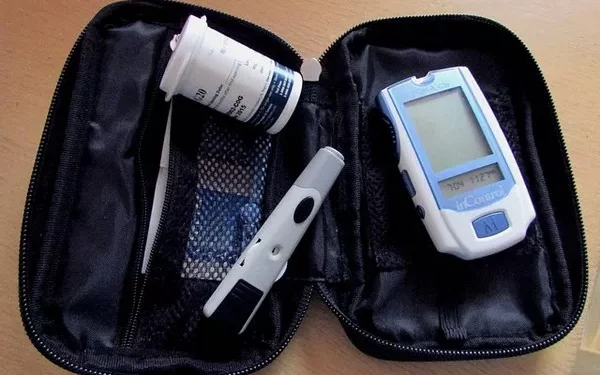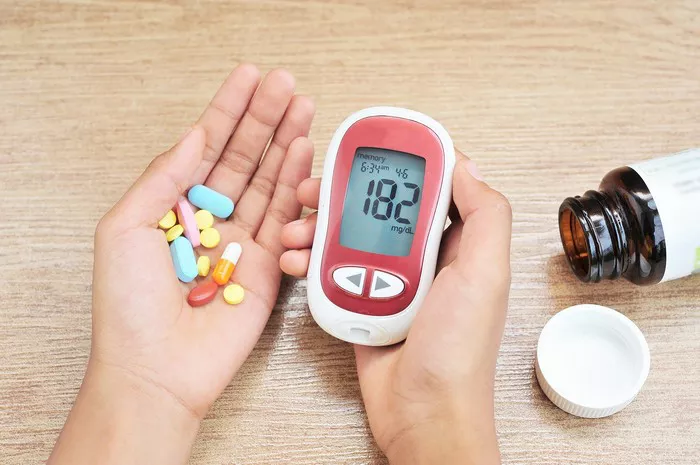Insulin resistance is a condition where the body’s cells become less responsive to insulin, a hormone that regulates blood sugar levels. This can lead to elevated blood sugar levels and eventually result in serious health issues, such as Type 2 diabetes, cardiovascular disease, and other metabolic disorders. Understanding how to identify insulin resistance is crucial for early intervention and management. This article explores the signs, symptoms, risk factors, and tests associated with insulin resistance.
Understanding Insulin Resistance
1. Definition of Insulin Resistance
Insulin resistance occurs when the body’s cells do not respond effectively to insulin. Insulin is responsible for facilitating the uptake of glucose from the bloodstream into the cells, where it is used for energy. When the cells become resistant, the pancreas produces more insulin to compensate for this reduced effectiveness. Over time, this can lead to an overproduction of insulin and eventually to the exhaustion of the pancreas, resulting in higher blood sugar levels.
2. Causes of Insulin Resistance
Several factors can contribute to the development of insulin resistance:
Genetics: Family history plays a significant role in an individual’s risk of developing insulin resistance. If close family members have Type 2 diabetes or metabolic syndrome, your risk may be higher.
Obesity: Excess body fat, particularly visceral fat around the abdomen, is a significant contributor to insulin resistance. Fat cells release hormones and substances that can interfere with insulin action.
Physical Inactivity: Sedentary lifestyles contribute to the development of insulin resistance. Regular physical activity helps maintain a healthy weight and improves insulin sensitivity.
Hormonal Changes: Conditions such as polycystic ovary syndrome (PCOS) and certain hormonal disorders can lead to insulin resistance.
Diet: A diet high in processed foods, refined carbohydrates, and sugars can contribute to insulin resistance.
3. The Role of Insulin in the Body
Insulin plays a vital role in regulating blood sugar levels. After eating, blood sugar levels rise, prompting the pancreas to release insulin. Insulin helps cells absorb glucose for energy or storage. In a healthy system, insulin efficiently manages blood sugar levels. However, when insulin resistance develops, this process becomes less effective, leading to elevated blood sugar levels and other metabolic complications.
Signs and Symptoms of Insulin Resistance
1. Common Signs of Insulin Resistance
Identifying the signs of insulin resistance early can help prevent the progression to Type 2 diabetes and other health issues. Common signs include:
Increased Hunger: Uncontrolled blood sugar levels can lead to feelings of hunger, as cells are unable to access glucose for energy.
Fatigue: Persistent fatigue can occur when the body struggles to use glucose effectively.
Weight Gain: Many individuals with insulin resistance experience weight gain, especially around the abdomen.
Difficulty Losing Weight: Despite diet and exercise, some people find it challenging to lose weight due to insulin resistance.
Frequent Urination: High blood sugar levels can cause increased urination as the body attempts to excrete excess glucose.
Increased Thirst: Frequent urination can lead to dehydration, resulting in increased thirst.
2. Skin Changes
Some individuals with insulin resistance may notice changes in their skin, such as:
Acanthosis Nigricans: This condition is characterized by dark, velvety patches of skin, often found in body folds like the neck, armpits, and groin. It is a common sign of insulin resistance.
Skin Tags: Small, benign growths that may appear on the neck, underarms, or eyelids are associated with insulin resistance.
3. Other Symptoms
Other symptoms may include:
High Blood Pressure: Insulin resistance is often associated with hypertension.
High Cholesterol Levels: Abnormal lipid levels can accompany insulin resistance.
Mood Changes: Some people experience mood swings or irritability due to fluctuating blood sugar levels.
Risk Factors for Insulin Resistance
1. Obesity
Excess body weight, particularly abdominal fat, is one of the most significant risk factors for insulin resistance. The relationship between obesity and insulin resistance is complex, as fat cells release various substances that can interfere with insulin action.
2. Physical Inactivity
A sedentary lifestyle is closely linked to insulin resistance. Regular physical activity helps improve insulin sensitivity by promoting glucose uptake by the muscles.
3. Age
Insulin resistance tends to increase with age. Older adults are more likely to experience changes in insulin sensitivity, especially if they are overweight or inactive.
4. Family History
Genetics plays a crucial role in the risk of developing insulin resistance. A family history of diabetes or metabolic syndrome can increase your likelihood of developing the condition.
5. Diet
A diet high in refined carbohydrates, added sugars, and unhealthy fats can contribute to insulin resistance. Conversely, a diet rich in whole foods, fiber, and healthy fats may help improve insulin sensitivity.
6. Hormonal Disorders
Certain hormonal disorders, such as PCOS, can increase the risk of insulin resistance. Women with PCOS often experience insulin resistance as part of the condition.
Testing for Insulin Resistance
1. Blood Tests
Several blood tests can help assess insulin sensitivity:
Fasting Insulin Test: This test measures the level of insulin in the blood after fasting for at least eight hours. Elevated fasting insulin levels may indicate insulin resistance.
Fasting Glucose Test: This test measures blood sugar levels after fasting. A fasting blood sugar level of 100 to 125 mg/dL indicates prediabetes, while levels above 126 mg/dL may indicate diabetes.
Oral Glucose Tolerance Test (OGTT): This test involves fasting overnight and then consuming a sugary drink. Blood sugar levels are measured at intervals. If blood sugar levels are elevated after two hours, it may indicate insulin resistance.
Hemoglobin A1c Test: This test measures average blood sugar levels over the past two to three months. An A1c level of 5.7% to 6.4% indicates prediabetes, while levels above 6.5% suggest diabetes.
2. Home Testing Kits
Some individuals may use home testing kits to monitor blood sugar and insulin levels. These kits can provide valuable information about how your body responds to food and activity.
3. Health Assessments
In addition to blood tests, healthcare providers may conduct health assessments that consider various risk factors, including family history, body weight, and lifestyle habits.
How to Manage and Improve Insulin Sensitivity
1. Lifestyle Changes
Making healthy lifestyle changes is crucial for improving insulin sensitivity and managing insulin resistance. Key strategies include:
Balanced Diet: Focus on a diet rich in whole foods, including fruits, vegetables, whole grains, lean proteins, and healthy fats. Limit processed foods, refined sugars, and saturated fats.
Regular Physical Activity: Aim for at least 150 minutes of moderate-intensity exercise per week. Activities like walking, swimming, cycling, and strength training can improve insulin sensitivity.
Weight Management: Achieving and maintaining a healthy weight is critical for improving insulin sensitivity. Even a modest weight loss of 5% to 10% can have a significant impact on insulin resistance.
2. Monitor Blood Sugar Levels
Regular monitoring of blood sugar levels can help identify patterns and inform dietary and lifestyle choices. Work with a healthcare provider to determine the best monitoring plan for your needs.
3. Medication
In some cases, healthcare providers may prescribe medications to help manage insulin resistance. Medications such as metformin can improve insulin sensitivity and lower blood sugar levels.
4. Stress Management
Chronic stress can contribute to insulin resistance. Incorporate stress-reducing techniques such as yoga, meditation, and deep breathing exercises into your routine.
5. Sleep Hygiene
Adequate sleep is essential for maintaining insulin sensitivity. Aim for 7 to 9 hours of quality sleep each night. Establish a regular sleep schedule and create a calming bedtime routine to improve sleep quality.
See also: What Is an Insulin Resistance Test?
Conclusion
Insulin resistance is a significant health concern that can lead to serious conditions, including Type 2 diabetes. Recognizing the signs, understanding the risk factors, and conducting appropriate testing are essential steps in identifying insulin resistance.
By implementing lifestyle changes, monitoring blood sugar levels, and working closely with healthcare providers, individuals can effectively manage insulin resistance and improve their overall health. If you suspect you may be insulin resistant, consult a healthcare professional for proper evaluation and guidance. Early detection and intervention are critical to preventing the progression of insulin resistance and associated health complications.
Related topics:
How Does Insulin Resistance Cause Hypoglycemia?



























